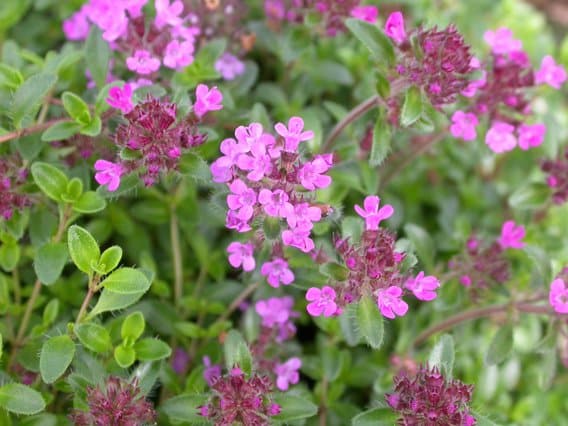If you’re a homeowner or gardener, chances are you’ve encountered the dreaded Creeping Charlie at some point in your life.
This invasive weed can quickly take over your lawn and garden, leaving you frustrated and overwhelmed.
But did you know that there are other plants that look like Creeping Charlie?
That’s right, there are several Creeping Charlie look-alikes that can be mistaken for this pesky weed, causing confusion and potentially leading to misidentification.
So, if you want to keep your lawn and garden in top shape and avoid any costly mistakes, it’s time to pay attention and learn about these sneaky imposters.
In this blog post, we’ll explore some of the most common Creeping Charlie look-alikes, how to identify them, and what to do if you spot them in your yard.
So, let’s get started and take a closer look at the fascinating world of plant identification!
What Is Creeping Charlie?

It is an evergreen, perennial plant belonging to the Lamiaceae family (mints). It’s also called ground ivy, run-away robin, field balm, and catsfoot.
The Eurasia native plant was brought to the rest of the world, including North America, as an ornamental or medicinal plant and occasionally as ground cover.
In the United States, Creeping Charlie grows in nearly every state.
Creeping Charlie’s young leaves are edible, usually cooked or as a salad. However, since the plant has volatile oils in high concentrations, it can harm livestock, especially horses.
It spreads efficiently and quickly through stolons (creeping stems), seeds, or rhizomes.
This plant has scalloped-edged, oval, or kidney-shaped leaves. Furthermore, the leaves have a dark green topside with a purple or light green underside.
This plant is commonly found in semi-shaded or shaded environments, typically under trees.
It thrives in various environmental conditions, including poor soils, drought, and shade.
What Does Creeping Charlie Look Like?
Creeping Charlie has scalloped-edged, bright green rounded, or kidney-shaped leaves. Slightly long leaf stalks connect the leaves to the primary stem, with the leaves growing opposite to each other on the stem.
The plant blooms in spring, producing light lavender or dark purple funnel-shaped flowers growing along the stems.
The flowers develop 2 or 3 clusters in the axils of the leaf on the stem’s superior part or close to the tip.
Related Post: How to get rid of creeping Charlie
6 Common Creeping Charlie Look Alikes
Many plants look like Creeping Charlie, so confusing them is pretty easy. However, while these plants share some characteristics with Creeping Charlie, some attributes set them apart.
1. Mazus reptans (Creeping Mazus)
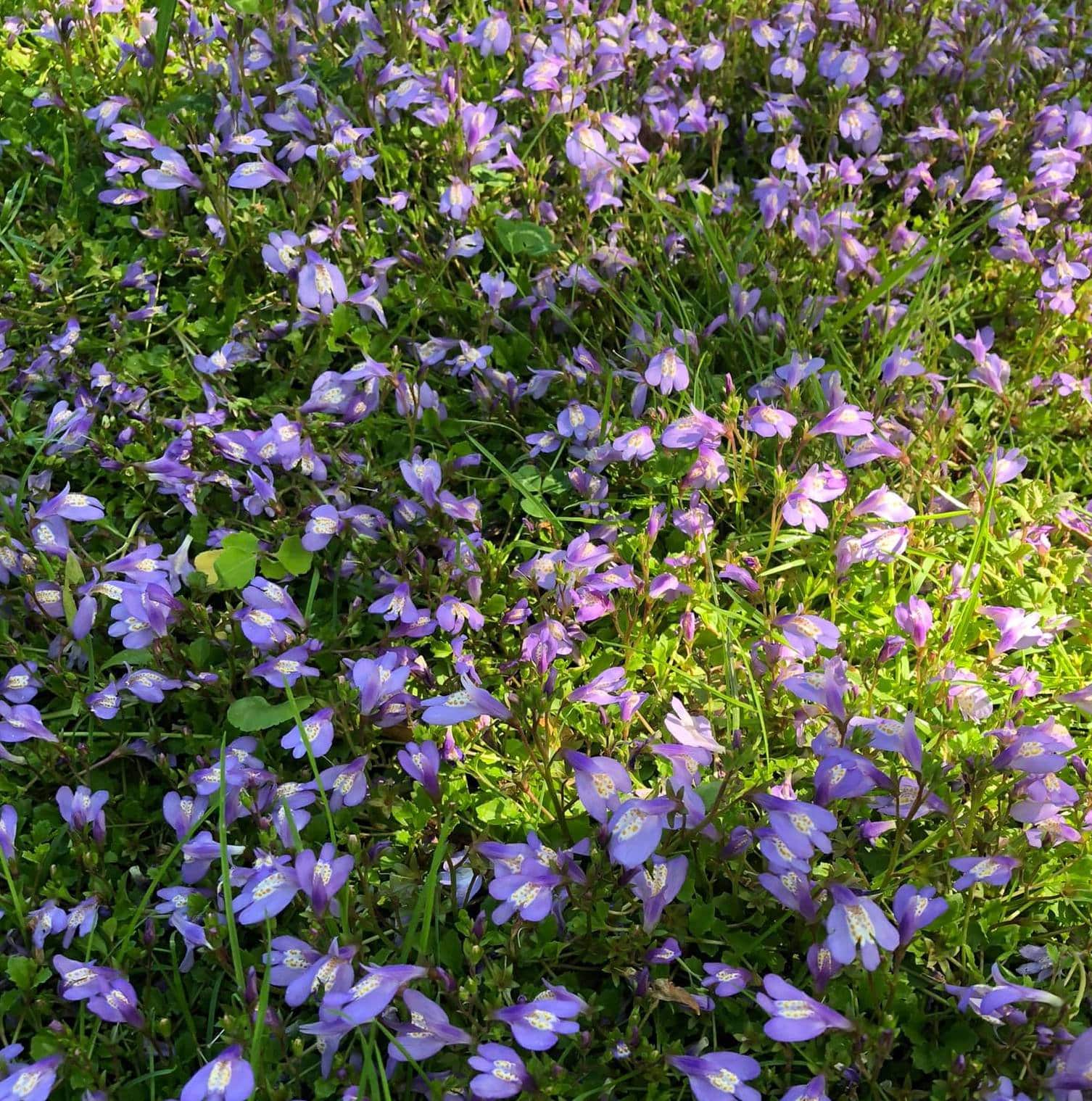
It is a semi-evergreen fast-growing perennial plant that forms a beautiful carpet comprising bright green sparsely toothed one-inch (2.5 cm) long leaves.
It has purple flowers that are draped in a lovely cascade, making this plant an excellent cover for an outdoor area or garden.
The flowers are tubular and have white and yellow markings. Like the Creeping Charlie, Mazus reptans is low maintenance, requiring occasional weeding and trimming. It also blooms in early summer or late spring.
2. Purple Dead Nettle (Lamium Purpureum)
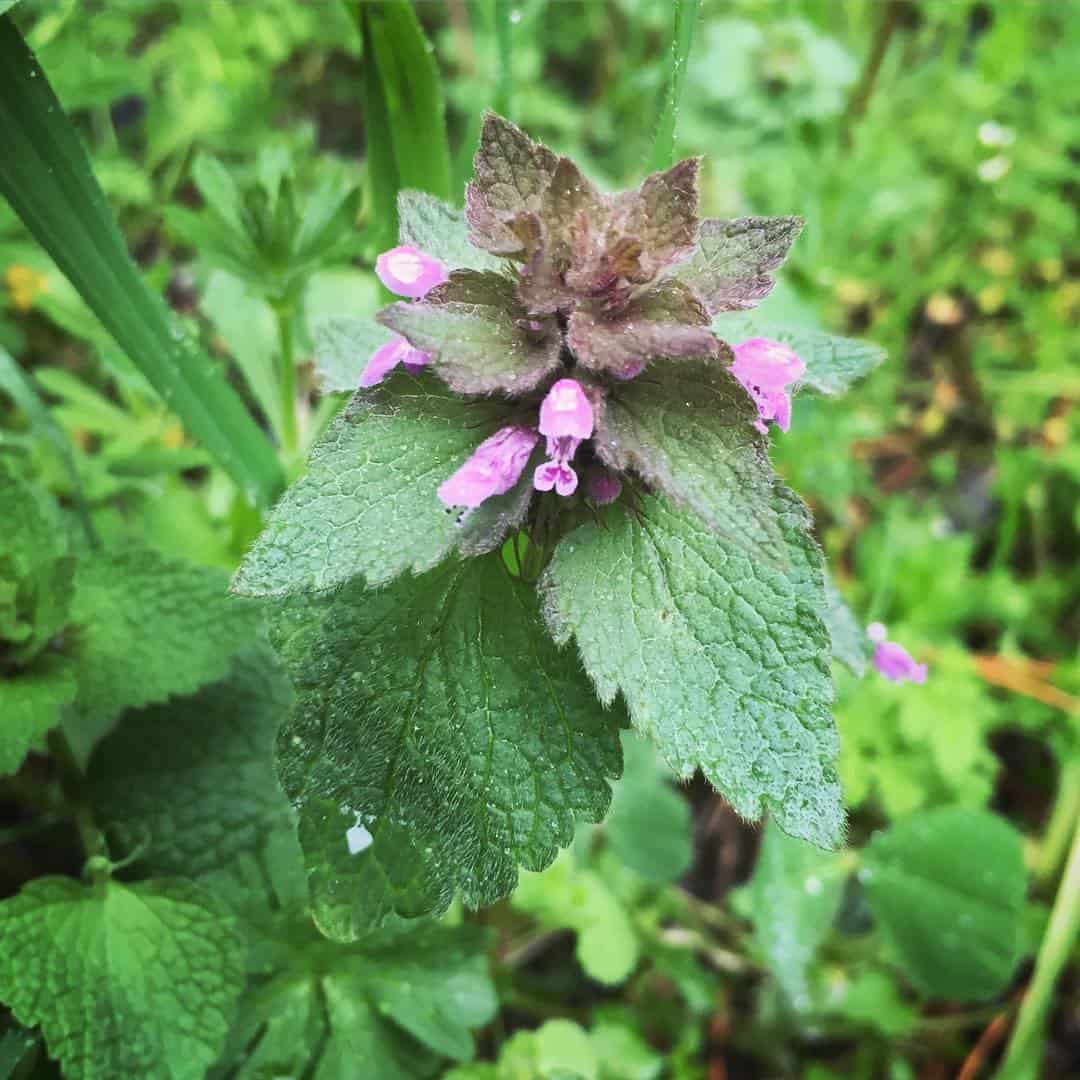
While native to Asia and Europe, this annual weed is now found in different places globally. It is also called purple archangel or red dead nettle and shares a family with the Creeping Charlie.
Purple Dead Nettle spreads through stolons or runners and has scalloped-edged heart-shaped leaves.
The leaf’s top part is dark green with a purple or light green underside. In addition, some of its parts serve as a herbal remedy or are eaten.
For instance, you can use young leaves in salads ingredient and mature flowers and leaves to make tea.
3. Lysimachia Nummularia ‘Aurea’ (Creeping Jenny)
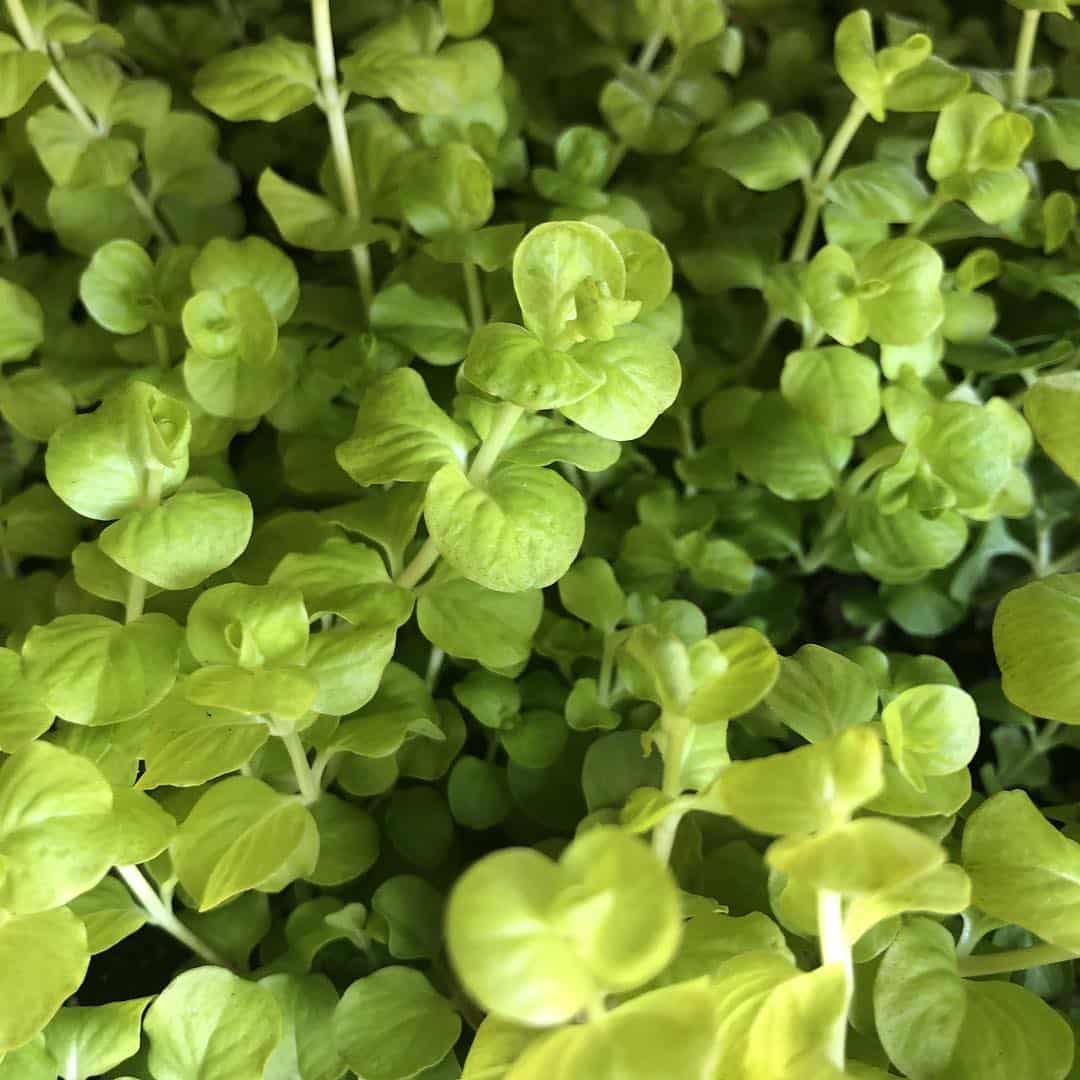
The perennial plant has round, bright golden leaves resembling coins and tiny, bright yellow flowers.
It makes desirable groundcovers since it creates beautiful, dense mats. Additionally, it is tolerant to partial shade and also thrives in sunny spaces, but you shouldn’t plant them in sun-baked areas.
However, it requires more maintenance compared to mazus reptans.
4. Common Mallow (Malva Neglecta)
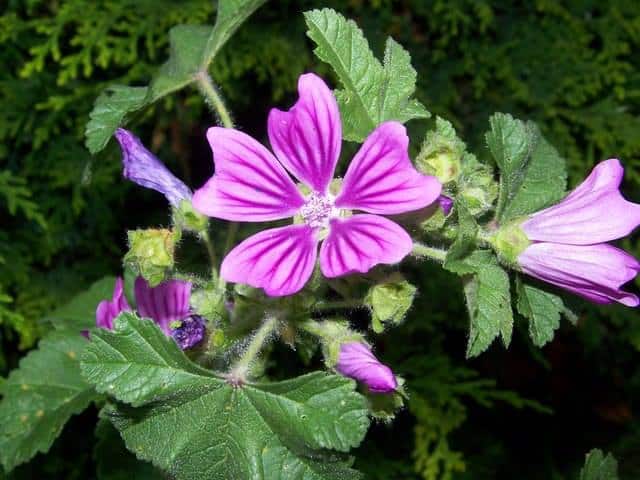
It is also called Cheese plant, Dwarf Mallow, Buttonweed, and Cheeseweed. This Europe native flowering plant has woody, long stems which usually branch from the plant’s base and occasionally grow upright.
Mature Common Mallow doesn’t grow over 12 inches high.
Common Mallow has lobed or toothed leaves, while the white and purple mix flowers are tiny with five petals.
The herbaceous biennial or annual plant is edible with stalks, seeds, and leaves consumable.
5. Lamium Amplexicaule (Henbit)

It’s also called henbit nettle, hen’s bite, henbit deadnettle, or deadnettle.
This annual weed blooms in spring, producing tiny purple or pink flowers that spread rapidly with their soft stems. Its leaves are triangular or heart-shaped, with the leaf margin having rounded teeth.
However, the leaves aren’t glossy like Creeping Charlie leaves.
Henbit is native to North Africa, Europe, and western Asia but also grows in North America today.
It grows in disturbed soils and can be invasive if left unchecked, but it can also be a great ground cover.
6. Thymus Praecox Coccineus (Red Creeping Thyme)
This plant features dazzling red flowers that appear in early summer and spring. It’s semi-evergreen, salt, and drought-tolerant and belongs in the same family as creeping Charlie. Moreover, it has woody stems and dark-green leaves.
It also releases an aromatic scent when stepped on or brushed against.
FAQs
Is Creeping Charlie The Same As Pennywort?
Creeping Charlie and Pennywort are not the same. Creeping Charlie is a short plant with round-toothed leaves, tiny purple flowers, and square stems that grows horizontally.
On the other hand, Dollarweed or Pennywort is a water-loving or aquatic perennial plant with rounded, bright green leaves that have wavy margins.
Creeping Charlie is in the Lamiaceae family, while Pennywort is in the parsley family.
Is Creeping Charlie The Same As Ground Ivy?
Creeping Charlie is also called ground ivy.
Is Creeping Charlie The Same As Garlic Mustard?
Creeping Charlie and Garlic Mustard aren’t the same. Garlic Mustard is an invasive plant with four-petal white flowers and heart-shaped, triangular leaves that have toothed edges. It gets its name since the leaves smell like garlic when crushed.
It can be eaten and used for medicinal purposes and as a herb. It is also known as Jack-by-the-edge, Garlic Root, Hedge Garlic, and Poor Man’s Mustard.
Is Creeping Charlie A Nettle?
Creeping Charlie isn’t a nettle. The plants in the nettle family have single, hairy, erect stalks, square stems, and heart-shaped leaves with serrated edges and pointed tips. The stems and leaves have needle-like hairs.
Conclusion
While Creeping Charlie resembles multiple plants, making it easy to confuse them, you can differentiate it from the rest if you know what to look for. You will see ground Ivy under shrubs and trees, and it thrives in shaded, moist environments. The creeping Charlie lookalikes discussed above can also offer great ground cover.
Reference
- Minnesota Department of Natural Resources –Creeping Charlie
- Penn State Extension – Dead Nettle, Henbit, and Ground Ivy – Three Look-Alike Weeds

Hey there, I’m Derek Schew, a writer for Lawnholic.com, where we cover everything and anything related to lawns. As someone who’s spent countless hours tending to my own lawn, I’m passionate about sharing my knowledge and helping others achieve the perfect yard. From lawn care tips to product reviews, I’m committed to providing our readers with the most accurate and up-to-date information available. So whether you’re a seasoned lawn enthusiast or just getting started, I invite you to join our community and discover the joys of a lush, green lawn.

